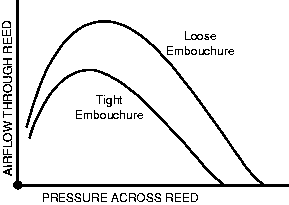
Figure 2: Flow through reed as a function of the pressure
across the reed for a particular embouchure (Adapted from A. Benade [Ben90]).
MIDI wind controllers have been designed to profit from the massive corpus of existing wind instrument playing technique, while at the same time providing the extra potential of MIDI control. Nevertheless, although MIDI wind controllers have the shape of and behave in a somewhat approximate manner to an acoustic instrument, they are drastically simplified models of real instruments (non-vibrating reeds, discrete [on/off] keys, etc.). In the WX7 controller, for instance, only three classes of woodwind instrumental gestures are sensed: breath pressure, lip pressure, and fingering configuration. These three classes of input are completely independent, sending three discrete streams of 8-bit MIDI data.
In contrast, acoustic instruments are obviously much more
sophisticated. The reed of an actual wind instrument, for instance,
has a complex behavior; many studies have shown the intricate and subtle non-linear
relationships between the different instrumental gestures applied to
the reed in woodwind instrument sound production. As one example,
airflow through the reed of a single-reed instrument such as a
clarinet or saxophone is a function of the pressure across the reed
(i.e., the difference between the pressure inside the player's mouth
and the pressure inside the mouthpiece) for a given
embouchure.[Bac77][Ben90][FR91] (See Figure 2)

Figure 2: Flow through reed as a function of the pressure
across the reed for a particular embouchure (Adapted from A. Benade [Ben90]).
In an acoustic instrument, the reed actually behaves as a pressure-controlled valve, wherein increasing breath pressure tends to blow the valve closed. The closing point is thus a function of the embouchure, since the closing of the reed takes place earlier for a tighter embouchure than for a looser one, given the same pressure difference. Such couplings are not taken into account in available controller systems that mimic acoustic instrument interfaces, such as the WX7 or the Akai EWI, due to the fact that these systems do not include vibrating reeds. 1
Furthermore, because of their role as controllers in two-stage systems that traditionally separate control from synthesis, the physical effects that account for sound production - and which are also very important as feedback for the performer - are intrinsically not modeled in wind controllers. These effects include feedback from the air pressure inside the instrument, symphathetic vibrations, etc. Although there is no means to simulate these physical feedback effects in a controller without the addition of actuators, one can simulate some of the behavior of the acoustical instrument through the use of specialized mappings.